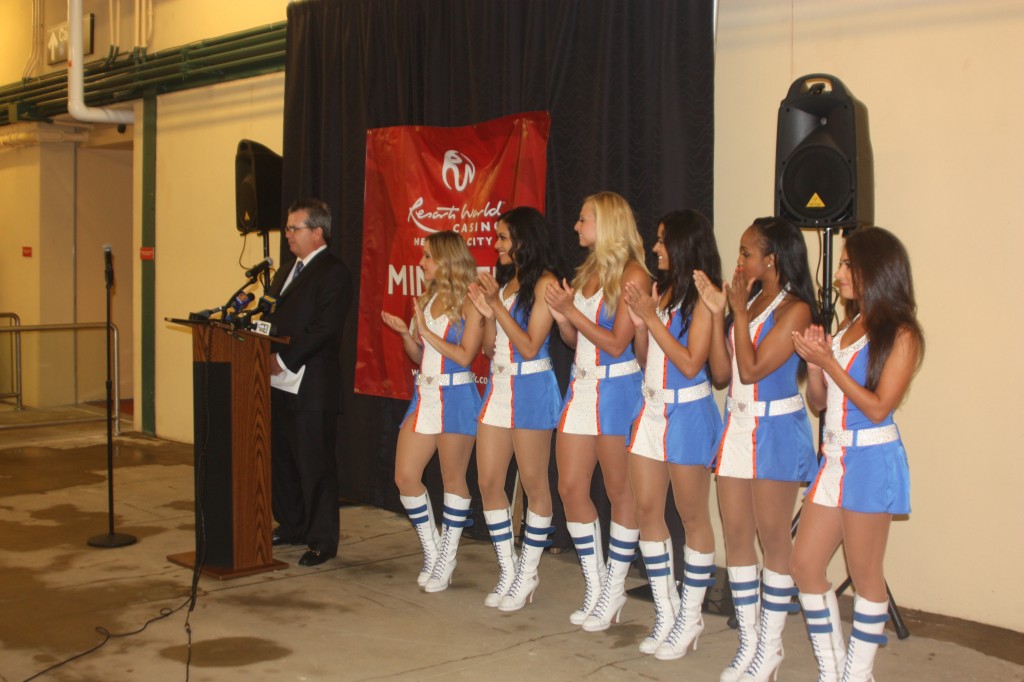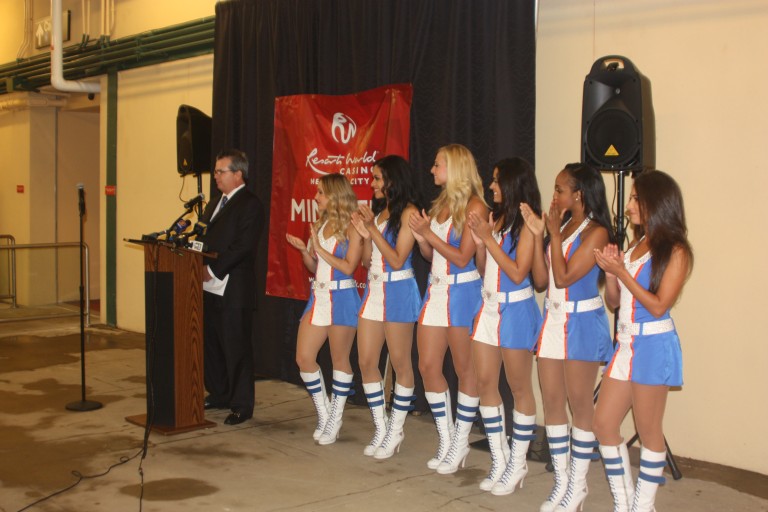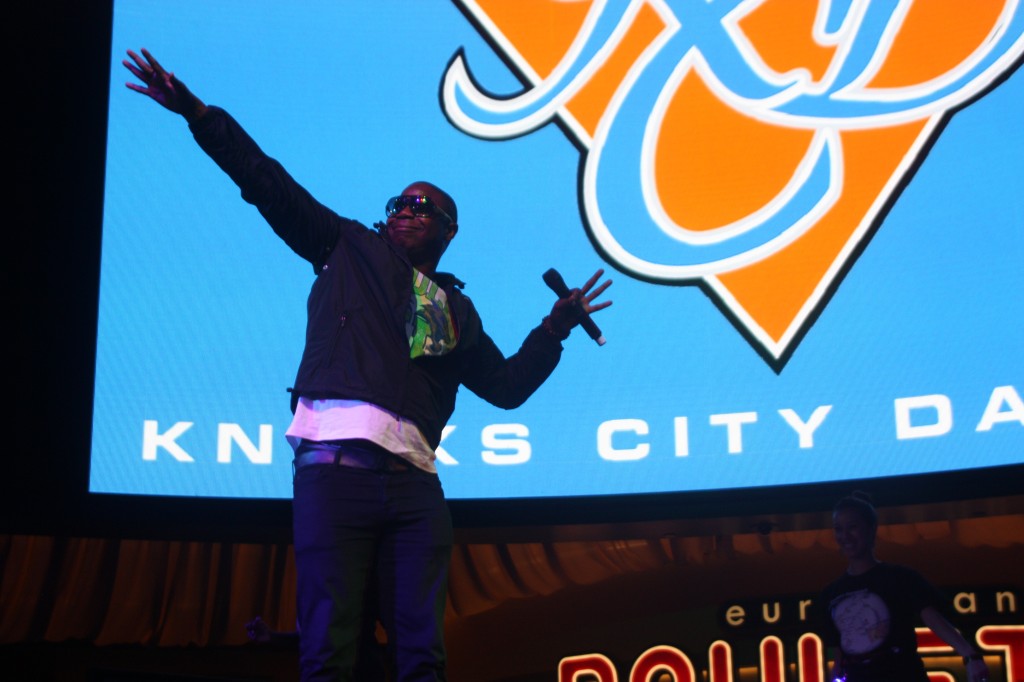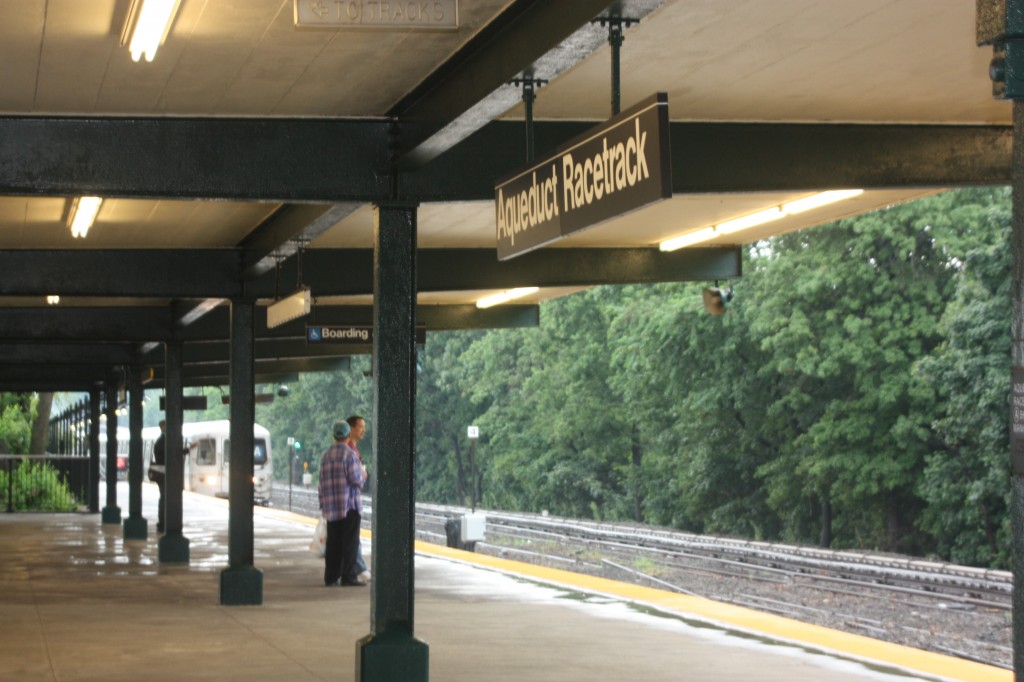
Resorts World Casino New York City President Edward Farrell, far left, speaks at the Aqueduct Racetrack Subway station’s grand opening as members of the Knicks City Dancers look on. Anna Gustafson/The Forum Newsgroup
Celebrated with moves from the Knicks City Dancers and music from rapper Doug E. Fresh, the official opening of the Aqueduct Racetrack subway station and skybridge paves the way for additional tourists to access the city’s only casino – as well as for South Queens residents to more easily hop on the A train in a neighborhood underserviced by mass transportation, officials said this week.
“We have about 12 million people a year visit Resorts World, and they’re going to have a much easier time getting here,” Resorts World Casino New York City President Edward Farrell said at Tuesday’s grand opening of the subway station and accompanying sky bridge that connects the transit stop to the casino at 110-00 Rockaway Blvd in South Ozone Park.
The subway station on the A line and sky bridge – a $15 million project footed entirely by Resorts World – is located at what used to be a stop that was operated only on days when there were races at Aqueduct. Now, however, the Metropolitan Transportation Authority will run the station 24 hours a day, 365 days a year.
“One thing I learned over the last two years is train stations are not free,” Farrell said, laughing, to the crowd of elected officials, civic leaders and other residents who gathered at Tuesday’s fete.
Legislators praised Resorts World for forking over the funds needed to operate the station year-round, saying it helps not just those wishing to take their chances on slot machines but also commuters in an area not heavily serviced by subways. The A subway runs from Rockaway Park to 207th Street in Manhattan.
“This new addition will not only benefit casino patrons, but the hundreds of commuters that use the A train,” Councilman Eric Ulrich (R-Ozone Park) said.
Community Board 10 Chairwoman Betty Braton said the “community now has a better way to get to the subway.
“They’re serving not only their corporate interests but the neighborhood as well,” Braton continued.
Assemblyman Phil Goldfeder (D-Rockaway Park) stressed that the casino has given millions of dollars to the state, including for education, the horse-racing industry and the lottery.
“For this community, it’s not just about how much is being gambled but how much is being put back,” Assemblyman Phil Goldfeder (D-Rockaway Park) said.
The casino – which is raking in more money than many of its upstate competitors, as well as facilities in New Jersey and Connecticut – has generated more than $1.2 billion in revenue and funneled more than $500 million into the state’s education fund since it opened in October 2011. The figure is a welcome one for the gaming industry giant, and, with the full-time operation of the Aqueduct subway station, officials expect its numbers to grow even more.
That’s good news for the South Queens facility, which seems to have attracted customers that once flocked to casinos in neighboring states, or upstate. Empire City Casino in Yonkers, for example, reported a 15 percent drop in business after Resorts World opened its doors.
Seth Bornstein, executive director of the Queens Economic Development Corporation, said the facility has definitely drawn tourists from throughout the city, and beyond, as well as from the”
The casino has generated a lot of tourism,” Bornstein said. “Before this, there were very few venues for music and other entertainment in the area.”
By Anna Gustafson



